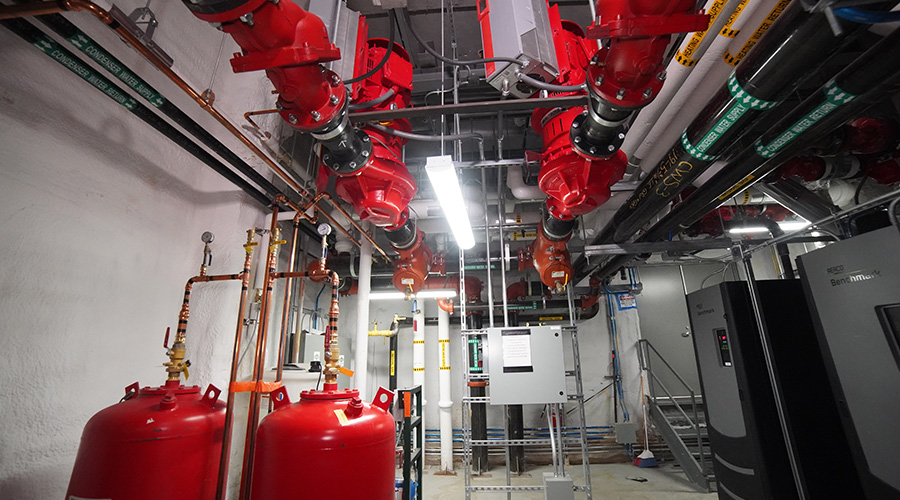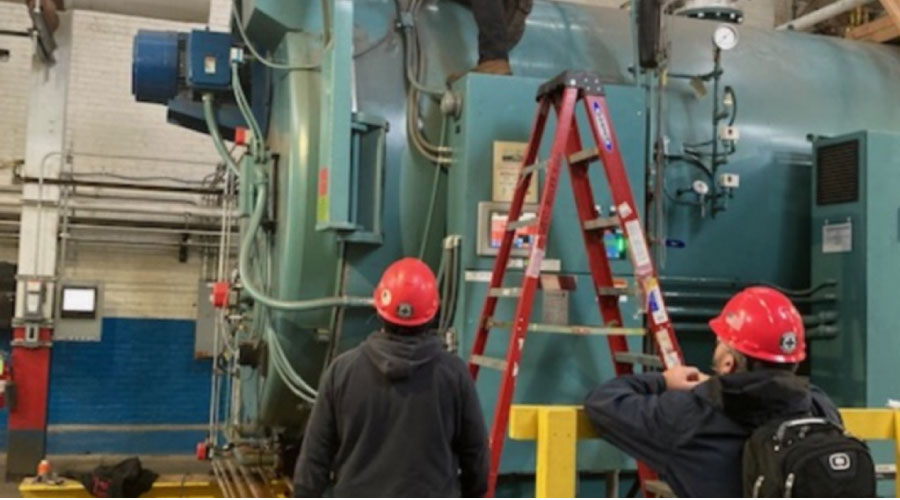Specifying Key Parameters in VFD Networking and Control Functions
To use the networking and control functions of VFDs for monitoring and troubleshooting, managers need to specify several key parameters. The first one is the communications interface card for building automation systems (BAS). Communication cards can be BACnet, Modbus, LonWorks, or other proprietary networks. The correct card should be included with the drive.
Another parameter is the location of the system's input and output control points. Are the sensors wired to the BAS, or to the VFD directly? The BAS can send control points to the VFD, or it can read from the VFD. The key decision on the setup relates to the reliability of the BAS network infrastructure. VFDs with input wired directly to them can act as standalone, single-loop controllers that do not require BAS input for extended periods of time. If managers are using the VFD as standalone control, they need to review the amount of input/output (I/O) modules. Extra modules can connect to the VFD as needed.
One potential issue with VFDs relates to power-system harmonics, which are current or voltages with carrier frequencies that are integer multiples of the power frequency. They result from the use of non-linear loads, such as VFDs, computers, laser printers, and big-screen televisions. Utility companies typically place limits on harmonics in the primary equipment.
Common issues with harmonics include sensitive-equipment malfunctions, communication interference, additional heat generation in transformers and panels, and higher energy bills due to inefficiencies. When non-linear loads represent approximately 30 percent or more of the connected load, managers should consider scheduling a harmonic analysis. VFD vendors, manufacturers and consulting engineers can assist in analyzing and mitigating harmonics within a power system.
To assess the harmonics, managers will need to know VFD sizes and quantities and provide an electrical one-line diagram of the facility. If harmonics are an issue for DC bus chokes, AC line reactors or the number of pulses in the VFD might solve the problem.
The electronics inside a VFD can induce a secondary voltage within a motor. If this induced voltage rises above the dielectric properties of the grease in the shaft bearings, the voltage might discharge through the shaft and bearings to the motor housing and to ground. These discharges create craters and pits in the bearings, eventually causing failure. To prevent this type of bearing failure, technicians might need to install a shaft-grounding ring, which allows the voltage discharge to bypass the bearing to the housing and to ground. The cost of these products is such that including them on large motors without a known bearing issue is safe insurance.
VFDs are electronic panels subject to the conditions in which they are located. Many times, VFDs are located in rooms or roofs with no air conditioning. The enclosure type is important because it affects the reliability of the VFD. High temperatures, moisture and dust can lower VFD efficiency and create operational issues. Most VFD manufacturers have several options for NEMA-rated enclosures, depending on the environment and need.
VFDs are connected to more motors than ever in facilities because they can provide significant energy savings. The number of applications continues to increase, and manufacturers constantly develop new technology. The items discussed are the basics, and VFDs offer many more attractive options. A thorough review of the system and its operation will help managers specify only the features their applications truly need.
James Dietz is a project manager with Henderson Engineers Inc. and a registered mechanical engineer with 12 years of experience in the design and installation of HVAC systems for government, higher education, arenas, and retail facilities.
Related Topics:














